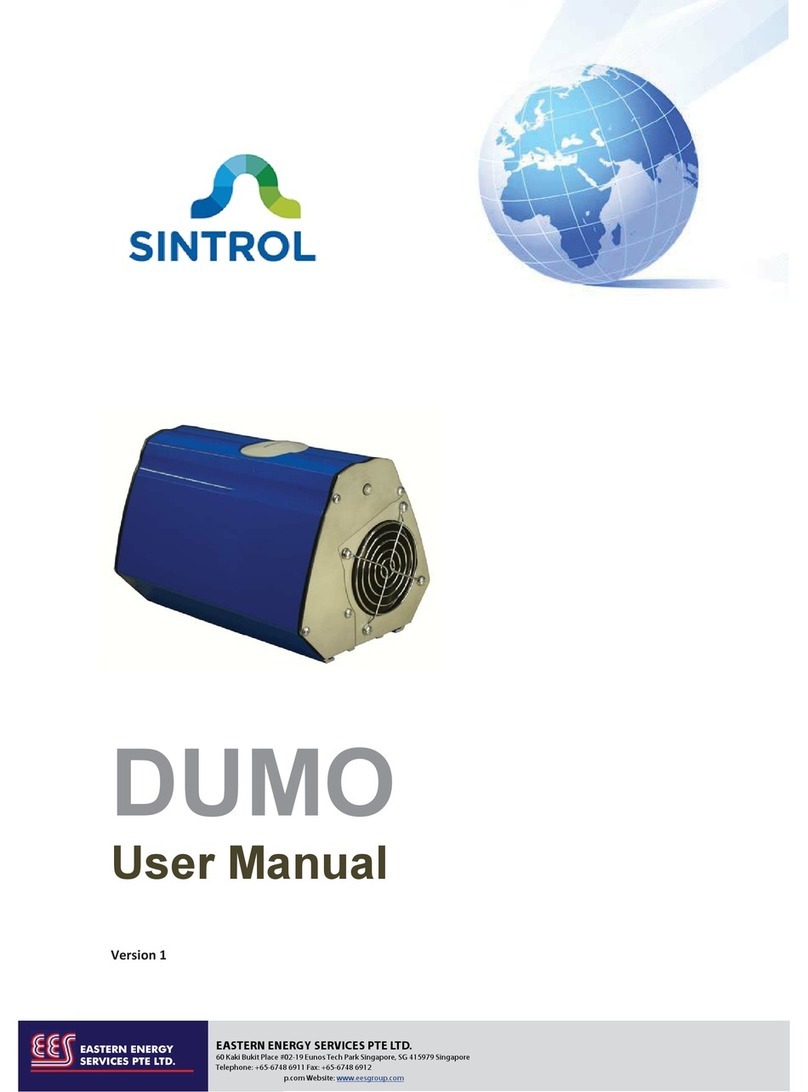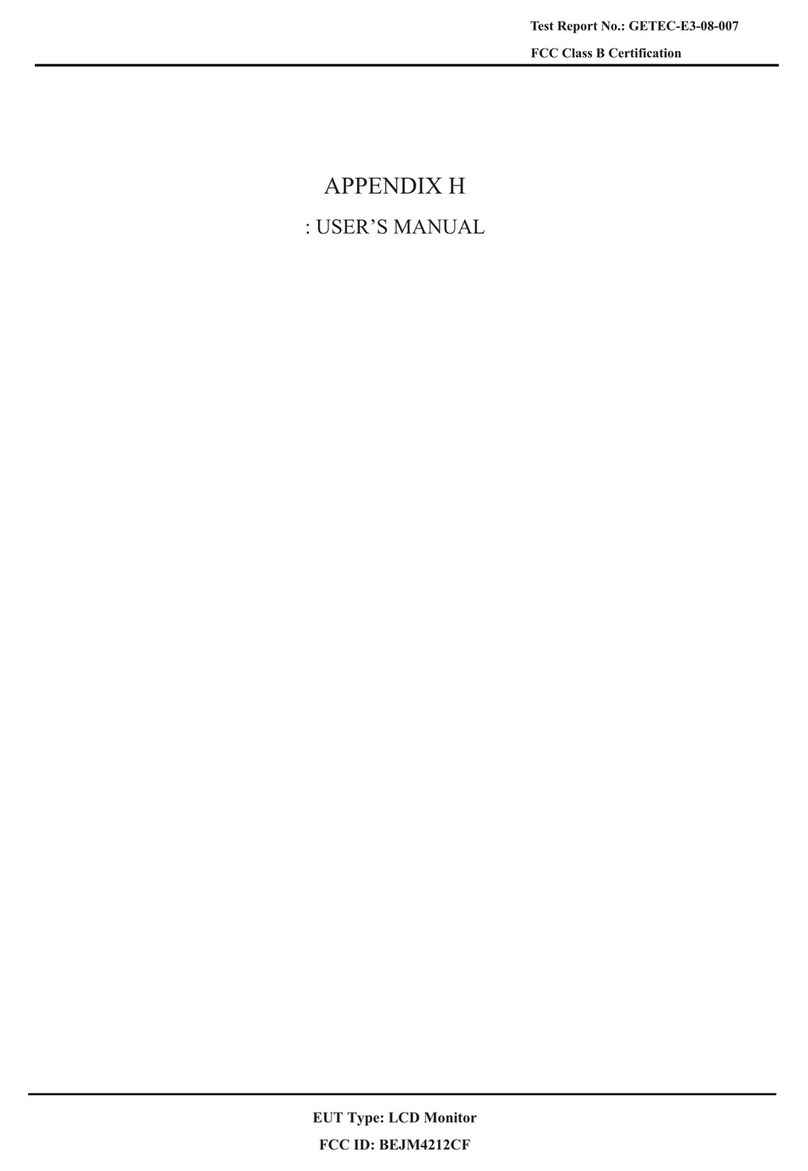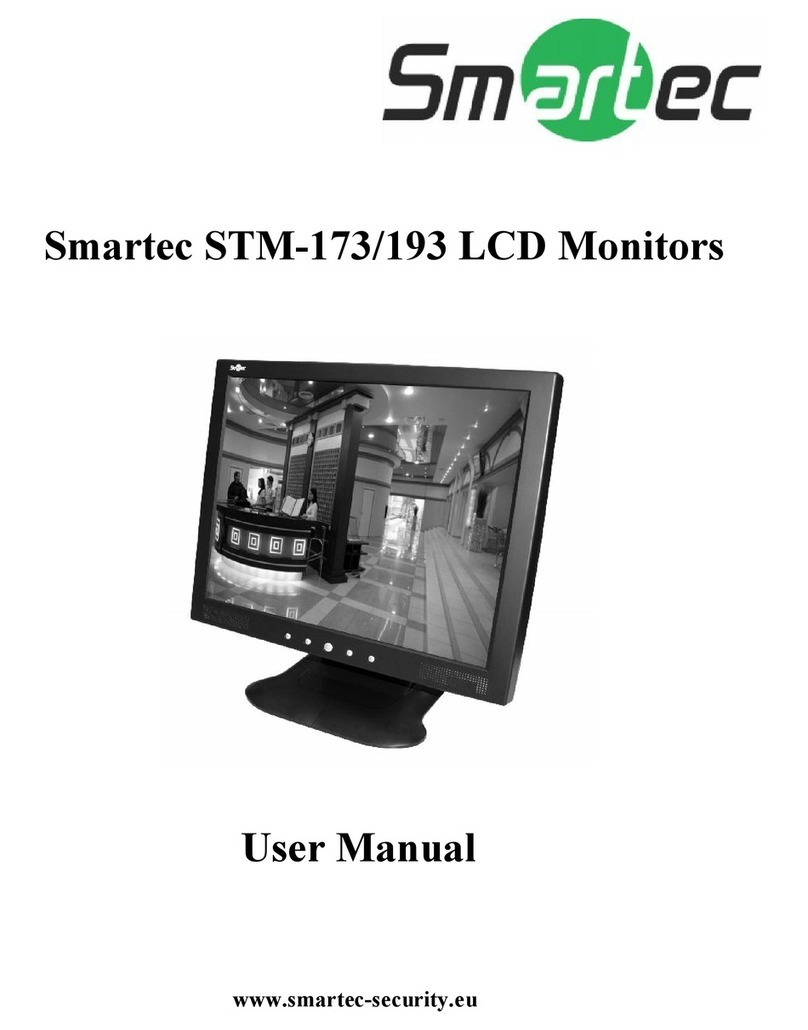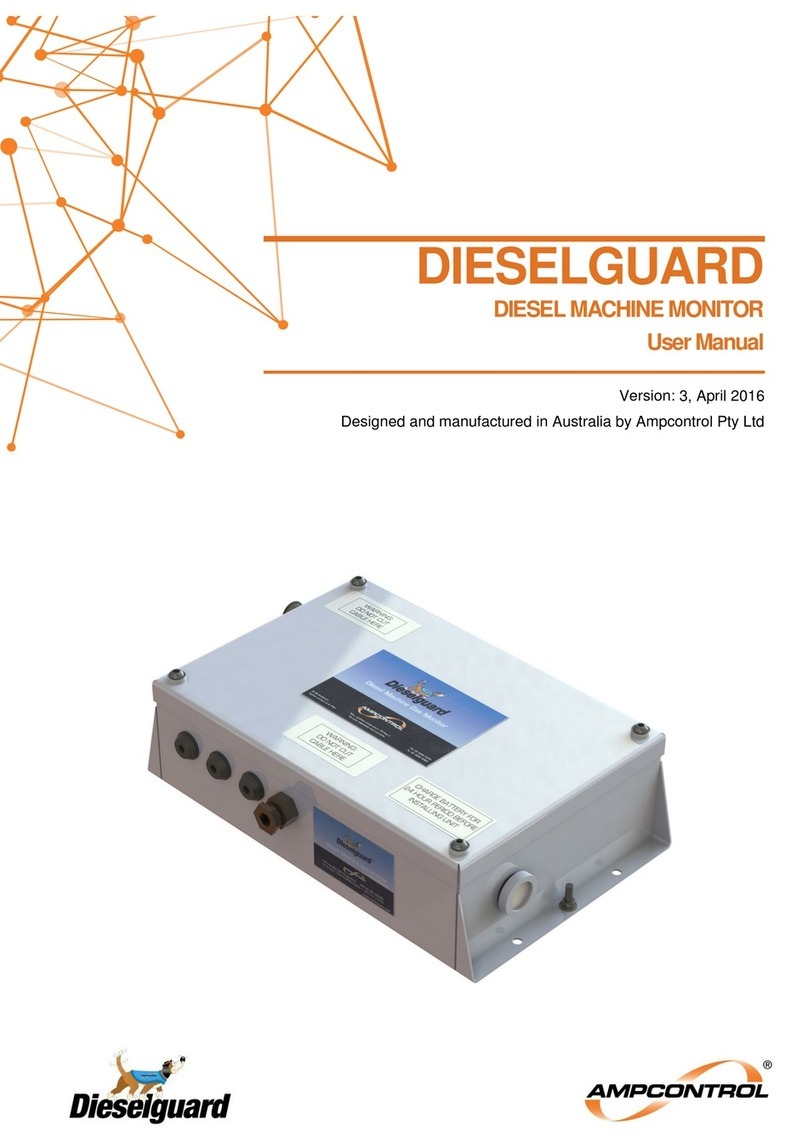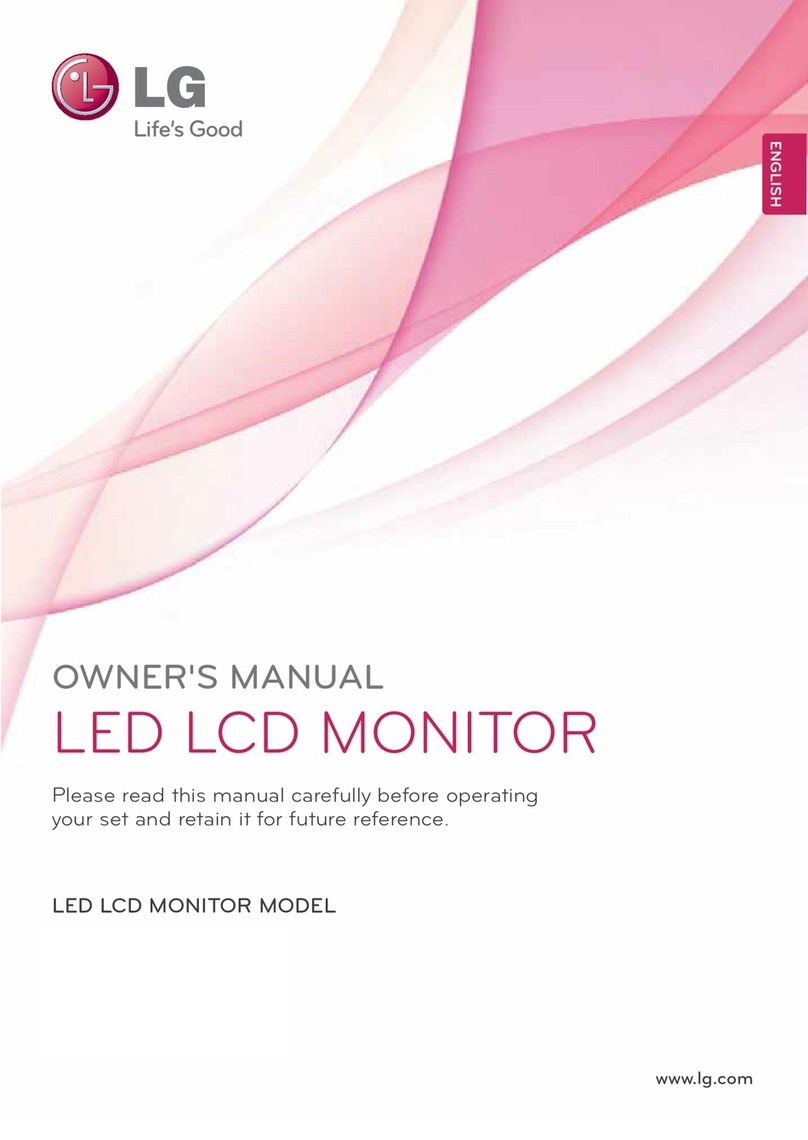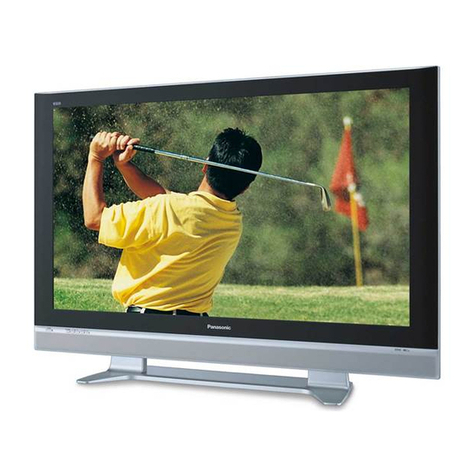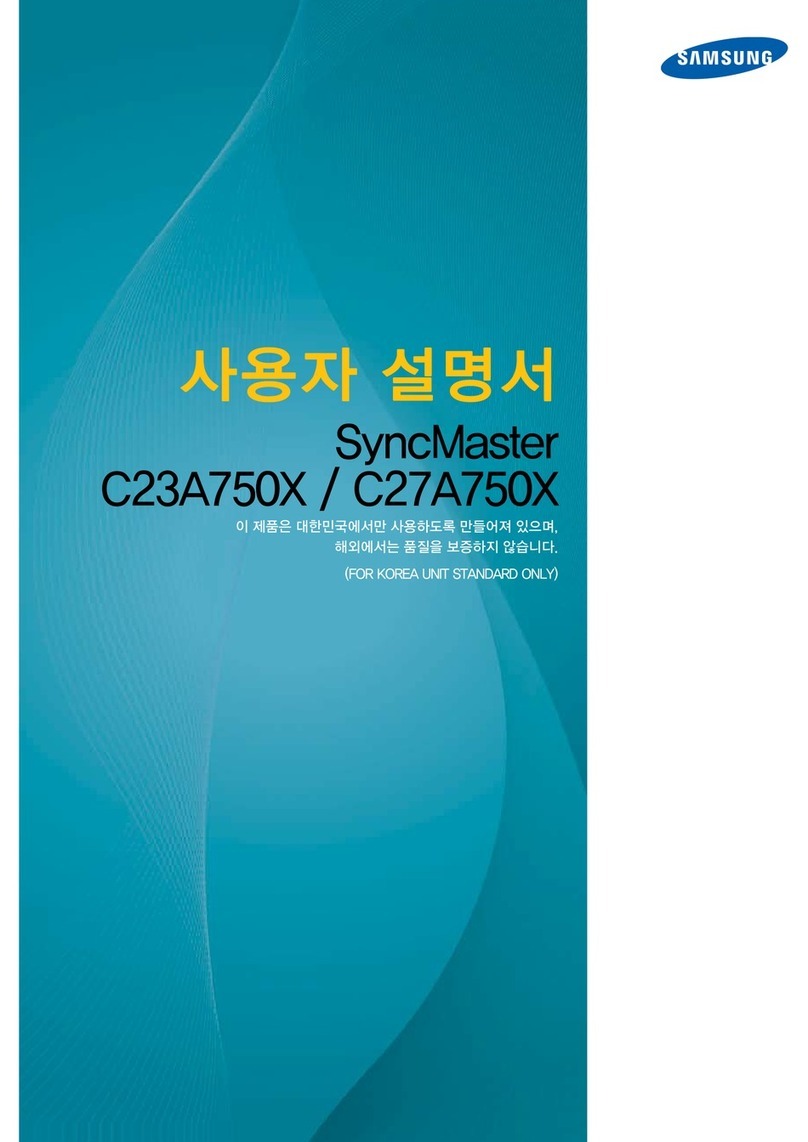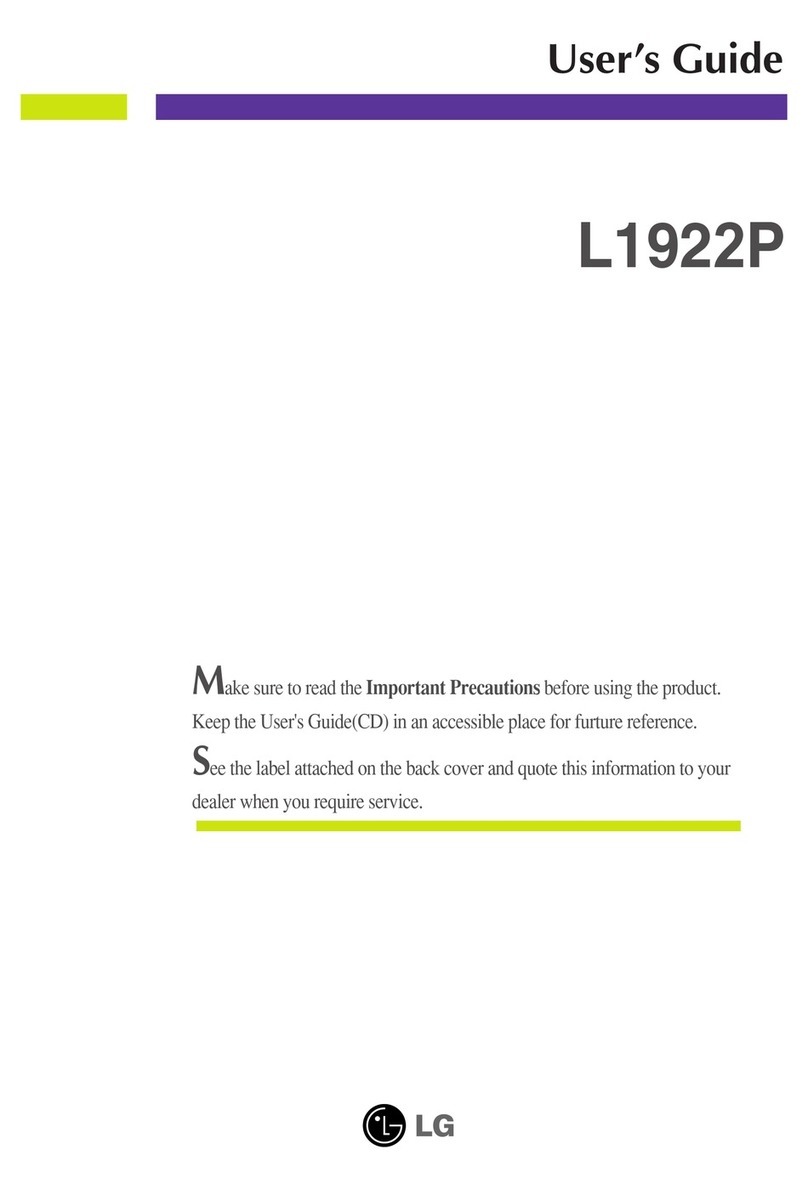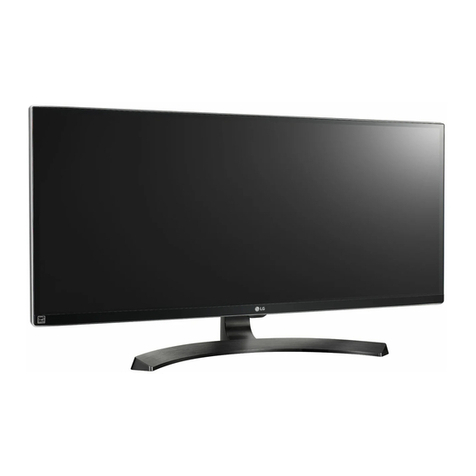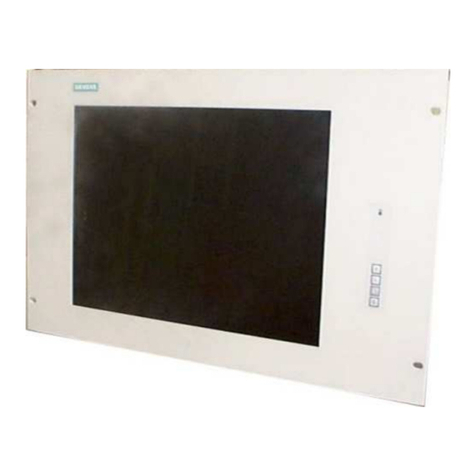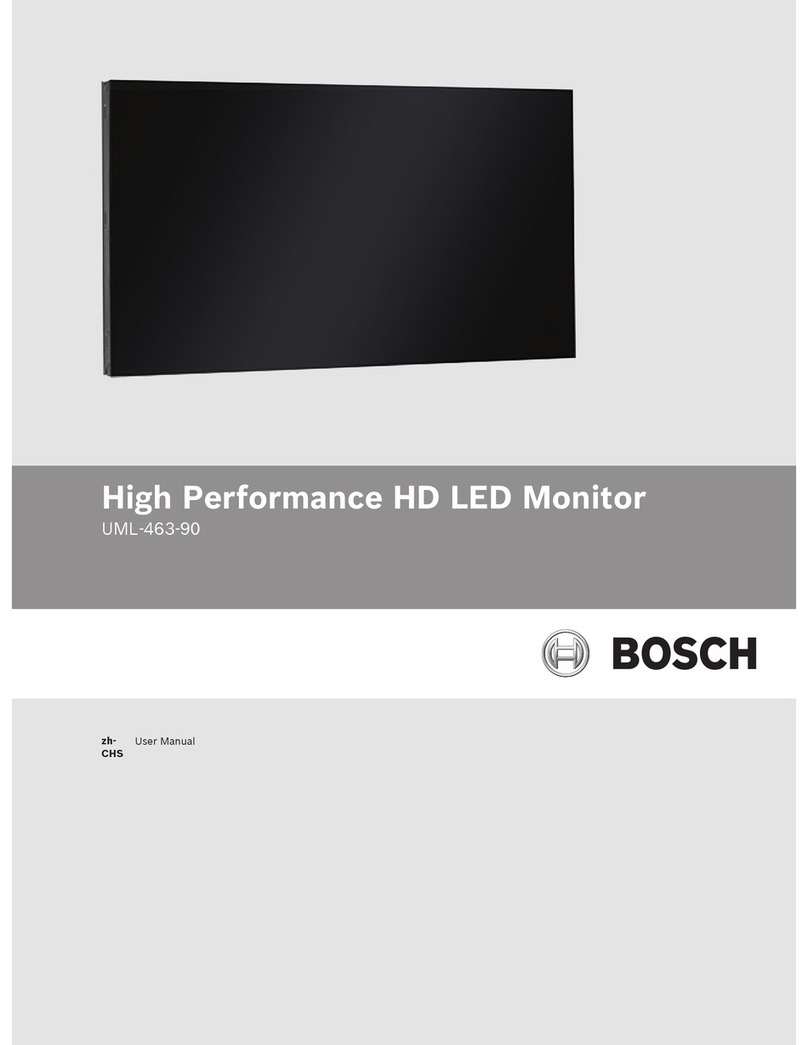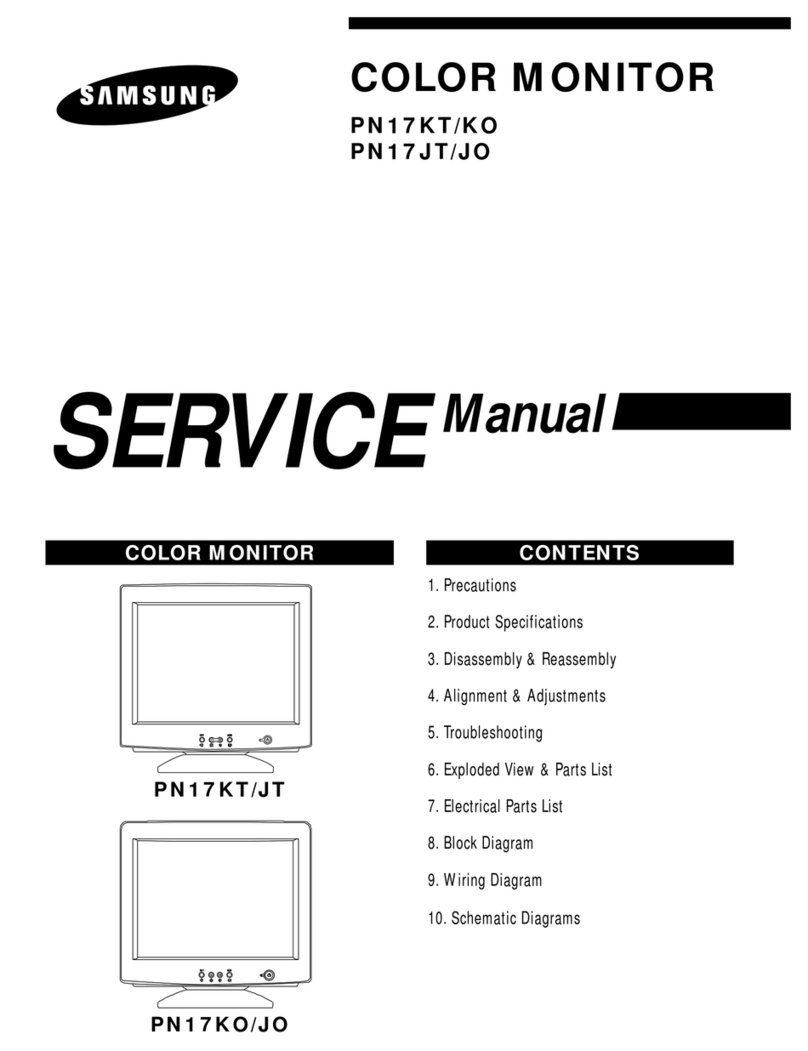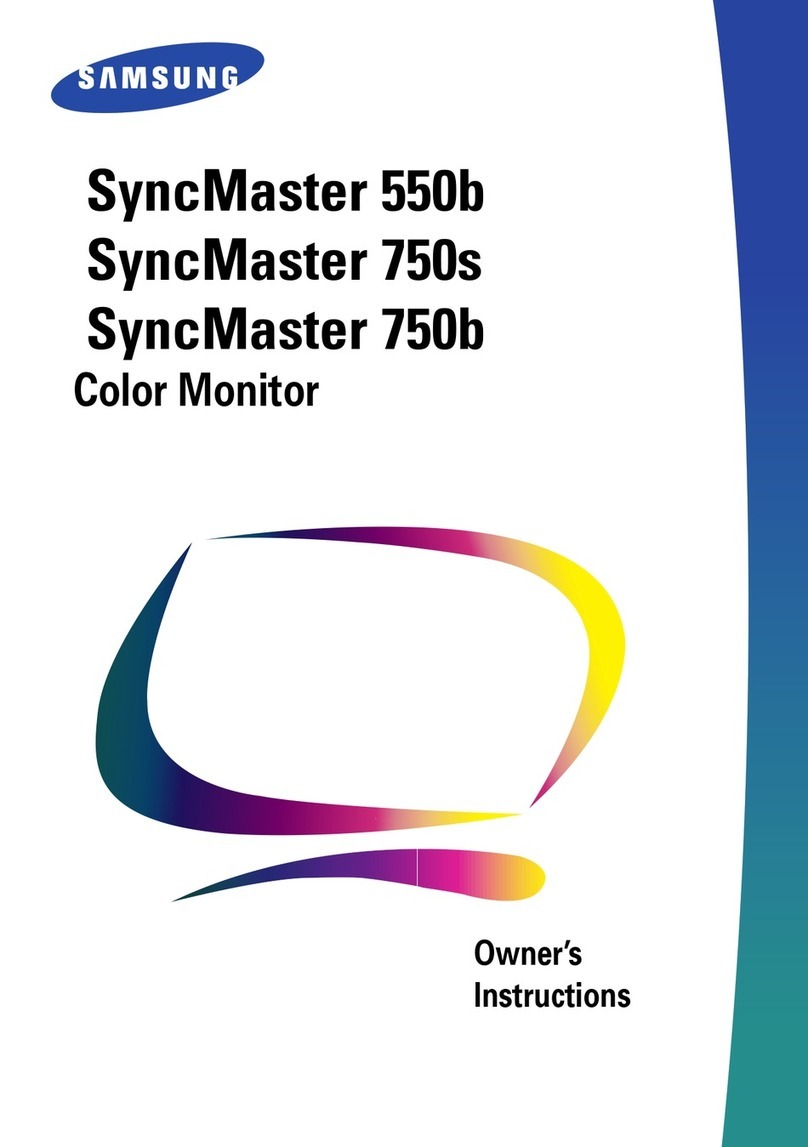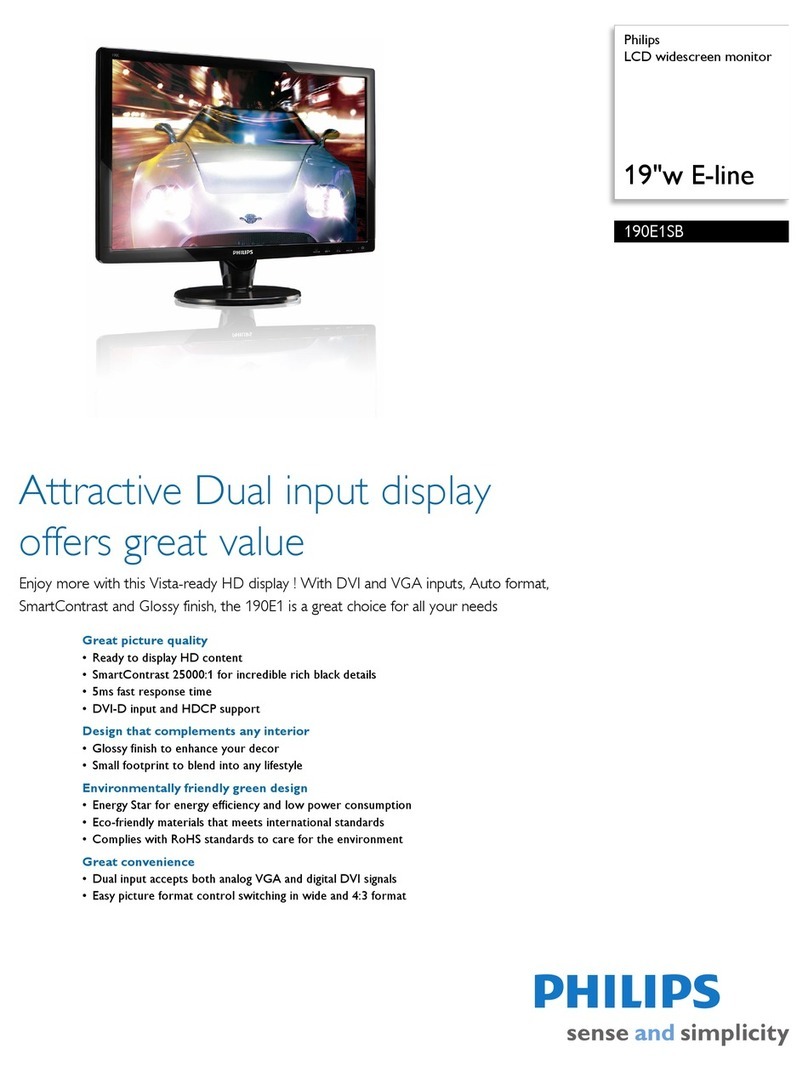Sintrol S300 Series User manual

S300 Series Dust Monitors
USER’S MANUAL
For S303 Dust Monitor
This manual describes how to install and use SINTROL’s digital triboelectric
dust monitor S303.
This manual is intended as a guide to the use and installation of the product.
Sintrol shall not be liable for any loss or damage whatsoever arising from use of
any information or details therein, or omission or error in this manual, or any
misuse of the product.
SINTROL Oy
Ruosilantie 15
00390 Helsinki
Finland.
Tel +358 9 5617 360
Fax +358 9 5617 3680

2
DustMonitor User Manual
2
21/08/2013 C:\Users\abruniquel\Desktop\S303 User Manual.doc
Table of Contents
1. INTRODUCTION............................................................................................3
1.1 Safety .............................................................................................................3
1.2 Product overview ...........................................................................................4
1.3 How does it work ? ........................................................................................4
2. INSTALLATION.............................................................................................5
2.1 Selecting the installation location..................................................................5
2.2 Installing the sensor .......................................................................................7
3. WIRING OF POWER AND OUTPUT CIRCUITS.....................................8
3.1 AC- power connectors (X3)...........................................................................8
3.2 Signal connector (X5)....................................................................................9
4. TECHNICAL SPECIFICATION.................................................................10
5. DIMENSIONS................................................................................................11
6. OPERATION .................................................................................................12
6.1 Operation of the monitor..............................................................................12
6.2 Relay connections........................................................................................12
6.3 How to change parameter values.................................................................14
6.4 Parameter 1 and 2 - Alarm relay 1 and Alarm relay 2 threshold.................15
6.5 Parameter 3 - Analog output zero adjustment..............................................15
6.6 Parameter 4 - Analog output span adjustment.............................................15
6.7 Parameter 5 - Alarm Relay delay time.........................................................15
6.8 Parameter 6 - Analog output damping.........................................................16
6.9 Parameter 7 - Normal process operation point ............................................16
7. AUTOMATIC SETUP ..................................................................................16
8. MAINTENANCE...........................................................................................18
9. TROUBLESHOOTING................................................................................18
9.1 The Monitor is not giving output signal ......................................................18
9.2 The Monitor is giving 4 mA or 20 mA continuously after autosetup
procedure. .................................................................................................................18

3
DustMonitor User Manual
3
21/08/2013 C:\Users\abruniquel\Desktop\S303 User Manual.doc
1. INTRODUCTION
1.1 Safety
Model LV requires a 115 VAC, 50/60 Hz power supply and model HV a 230 VAC,
50/60 Hz power supply. In both cases, the power supply must be considered as
potentially lethal and all suitable precautions must be taken whenever the cover of the
unit is removed. DC model requires 24 VDC power supply.
S300 Series dust monitors are virtually maintenance free. Under no circumstances
should the user attempt to replace any components or the PC board. If, for some
reason the monitor fails to operate, contact your local distributor or the manufacturer.
Take appropriate precautions when installing the monitor:
Unless the process conditions are known to be entirely safe, suitable
precautions must be taken before any entry is made into the duct for
installation or maintenance purposes.
•The unit may be installed in ducting, containing particulate, hazardous to
health.
•The particulate may be inflammable, explosive or toxic
•The gas can be hot and pressurised
The S300 Series dust monitors do not have an internal circuit breaker. The customer
has to install a separate circuit breaker to the power cable to ensure that the power can
be isolated. Electrical installations must be carried out in a manner to satisfy all
applicable, local regulations.
It is essential that the unit is correctly grounded! (see section 3.1)

4
DustMonitor User Manual
4
21/08/2013 C:\Users\abruniquel\Desktop\S303 User Manual.doc
1.2 Product overview
The S303 Trend monitor is a microprocessor-based, self-adjusting device, equipped
with two alarm relays and a 4-20 mA signal output is designed for trend or filter bag
leak detection. It can also be used to detect blockage or stoppage in pneumatic
transport and bulk solids handling. It is a compact unit with the sensor and control
units built into one IP65 enclosure, that has been specifically designed for easy
installation and operation. The standard model is designed for applications at up to 2
bar and 100 °C. High-temperature (HT) models are available for at up to 350 °C.
1.3 How does it work ?
The model S303 Trend monitor use proven and reliable triboelectric technology where
the interaction of particles with the sensor rod causes a small electrical charge to pass
between the particulate and sensor.
It is this small electric charge that provides the signal monitored by the electronics, the
signal generated is proportional to the dust level even if particles accumulate on the
sensor. Experience has shown that this method of monitoring dust level in gasses,
offers accurate results with minimum maintenance.

5
DustMonitor User Manual
5
21/08/2013 C:\Users\abruniquel\Desktop\S303 User Manual.doc
2. INSTALLATION
2.1 Selecting the installation location
The best location for installation of the units of the S300 Series is in a section of duct
where the particulate has an even distribution and the flow is laminar. This is to ensure
that the sensor rod comes into contact with a representative flow of particles.
The ideal position would be in a section of duct, that has no bends, valves, dampers or
other obstructions for a distance equal to at least three duct diameters downstream or
upstream (preferable 5 x duct diameter).
Figure 1. Recommended distances to duct bends
In some applications, a compromise must be made and the sensor will have to be fitted
in a position that satisfies the majority of above requirements. The units of the S300
Series must be attached to metal ductwork so that they will be electrically shielded
from interference and be provided with a ground reference. For non-metal ducts, a
section of the duct, approximately five diameters in length, should be covered with a
metal foil or fine-mesh outside of the duct.
The units must not be installed in direct sunlight or in areas where the ambient
temperature is above 45
o
C. Please contact your local distributor or Sintrol if you
require further advice.

6
DustMonitor User Manual
6
21/08/2013 C:\Users\abruniquel\Desktop\S303 User Manual.doc
Figure 1. S303 Trend Monitor
The unit shall be installed in a position, where the gas flow passes the sensor rod in a
90°angel.
In round cross-section ducts, the unit can be installed in any position above the
horizontal axis (between 9 o’clock and 3 o’clock).
For square cross-section ducts, the unit must be positioned in the middle of the top or
in the middle of one of the sides. In all cases, the tip of the sensor rod must extend at
least 1/3 of the diameter of the duct. Depending on the dust concentration, the probe
length could vary from 1/3 to 2/3 of the duct diameter. As a rule of thumb: the lower
the dust concentration the longer the probe.
If possible the unit shall be installed in a position where the duct pressure is negative.
If installed downstream an electrostatic precipitator (ESP), the distance from the ESP
should be at least 20 m. Although the sensor (lengths less than 1m) is not affected by
vibration, very high vibration levels should be avoided.
Figure 3a. Round cross-section duct Figure 3b. Square cross-section duct
The mounting socket in
the middle of the side or
in the middle of the top
The unit above
horizontal axis

7
DustMonitor User Manual
7
21/08/2013 C:\Users\abruniquel\Desktop\S303 User Manual.doc
2.2 Installing the sensor
Once the location of the unit has been selected, the mounting socket must be welded to
the pipe or duct. To do this, first cut a hole in the duct slightly larger than the OD
of the mounting socket, 38 mm. The socket must be perpendicular to the flow in the
duct. Make sure the socket is in the right position and make an airtight welding
After welding the socket in position, insert the sensor.
Figure 4a. Sensor installation
1. Probe 5. Enclosure
2. Fixing screw 6. Duct wall
3. Cables (mains and signals) 7. Socket
4. Cover 8. Weld
WRONG SOCKET INSTALLATION
Figure 4b.
Wrong socket installation
,
THE DIAMETER OF THE HOLE MUST BE MINIMUM 38 MM
IMPORTANT !!
The hole diameter
must be at least
38 mm
Diameter of the hole
to the stack must be
minimum Ø 38 mm.
to avoid the sensor
probe contact to the
duct wall.

8
DustMonitor User Manual
8
21/08/2013 C:\Users\abruniquel\Desktop\S303 User Manual.doc
3. WIRING OF POWER AND OUTPUT CIRCUITS
3.1 AC- power connectors (X3)
Voltage: 230 VAC +/- 20 V or 115VAC +/- 10V or 24 VDC
Frequency: 45 Hz … 65 Hz (AC models)
Power cable: 3 x 1,5 mm
2
Connect a 115/230 VAC power supply or a 24 VDC power supply to connector X3
(see Figure 5). Push the connector lever until the connector slot jaw opens, insert the
power supply lead, then release the lever. Attach the ground wire to the GND screw.
AC1 Line terminal. (+ terminal in 24 VDC model)
AC2 Neutral terminal. (- terminal in 24 VDC model)
GND Protective earth terminal.
Figure 5. Wiring
AC1
AC2

9
DustMonitor User Manual
9
21/08/2013 C:\Users\abruniquel\Desktop\S303 User Manual.doc
3.2 Signal connector (X5)
One or more of the following functions are available, depending of the product model:
Relay output 1: Volt free SPDT contact, max. load 5 A @24 V AC/DC
Relay output 2: Volt free SPDT contact, max. load 5 A @24 V AC/DC
Analogue output: 4-20 mA, active, isolated. isolation Voltage 500 V.
Serial communication: RS-422 isolation Voltage 500 V.
Connect the signal wires to connector X5 (see Figure 6a and 6b). Push the connector
lever with a screw driver, until the connector slot jaw opens, insert or remove the wire,
then release the lever.
Slot 1 Relay1 normally closed (NC) terminal. (S301/S302/S303)
Slot 2 Relay1 common (C) terminal. (S301/S302/S303)
Slot 3 Relay1 normally open (NO) terminal. (S301/S302/S303)
Slot 4 Relay2 normally closed (NC) terminal. (S301/S302/S303)
Slot 5 Relay2 common (C) terminal. (S301/S302/S303)
Slot 6 Relay2 normally open (NO) terminal. (S301/S302/S303)
Slot 7 4-20 mA (+) more positive terminal, active output. (S302/S303)
Slot 8 4-20 mA (-) more negative terminal, active output. (S302/S303)
Slot 9 RS 422 output (+) terminal (N/A in models S301/S302/S303)
Slot 10 RS 422 output (-) terminal (N/A in models S301/S302/S303)
Slot 11 RS 422 input (+) terminal (N/A in models S301/S302/S303)
Slot 12 RS 422 input (-) terminal (N/A in models S301/S302/S303)
Figure 6a. Signal connector Figure 6b. Signal connector X5 wiring
X5
Signal connector terminal
SERIAL
mA
RELAY 2
RELAY 1
SHIELD GROUND
USED ONLY WITH SERIAL
COMMUNICATION

10
DustMonitor User Manual
10
21/08/2013 C:\Users\abruniquel\Desktop\S303 User Manual.doc
4. TECHNICAL SPECIFICATION
Measured objects: Solid particles (dust) in a gas stream
Particle size: 0.3 µm or larger
Measurement range: 0.1 mg/m
3
to 1 kg/m
3
Process Conditions:
Temperature: Max. 100°C (standard) / 200-350°C (optional)
Pressure: Max. 200 kPa
Gas velocity: Min. 4 m/s
Humidity: 95 % RH or less (non-condensing)
Input surge voltage: Max. 100 V
principle of Measurement: Friction / electrostatic detection
Damping time constant: 10 to 180 seconds
Output signals: Isolated 4-20 mA
Relay 5 A , 24 V AC or DC
Ambient conditions:
Temperature: -20 to + 45
o
C
Humidity: 95% RH (non-condensing)
Vibration: 5 m/s
2
or less
Materials:
Sensor rod: Stainless steel
Insulation of sensor: PEEK (300
o
C), Teflon (100
o
C)
Enclosure /casing. Aluminium alloy
Power Supply: 115 VAC or 230 VAC or 24 VDC
Power consumption: 8 W AC models, 3 W 24 VDC model
Wiring connections: DIN PG11 port for power cables
DIN PG11 port for signal cable
Weight: 2.3 kg
Range setup options:
Normal measuring range: -automatic, based on average measured dust flow
Extended measuring range: - (option) set at factory
Alarm threshold: Adjustable via internal keys or via serial port.
Zero point offset trim: Automatic
This instrument conforms to the following standards
EN 61010-1:2001 Safety, LVD
EN 61326-1 A1 (1998) Electromagnetic Compatibility EMC
Mechanical tests:
IEC 60068-2-6, TEST Fc(1995-03), IEC 60068-2-29, TEST Eb

11
DustMonitor User Manual
11
21/08/2013 C:\Users\abruniquel\Desktop\S303 User Manual.doc
5. DIMENSIONS
Figure 5. Dimensions and structure of S300 series Dust Monitor enclosure

12
DustMonitor User Manual
12
21/08/2013 C:\Users\abruniquel\Desktop\S303 User Manual.doc
6. OPERATION
6.1 Operation of the monitor
The S300 Series Dust Monitor measures the dust level in a gas stream by monitoring
electrostatic discharge when charged dust particles hit or pass by the probe. It may
have a 4…20 mA output (S302/S303), and/or two relay contact alarm outputs (S301,
S302 and S303).
The signal generated by the electrostatic loaded particles can be averaged with a user
selectable time constant to remove the effect of short variations.
The alarms are arranged such that Alarm 1 is a low alarm , Alarm 2 is a high alarm.
The alarms can be delayed by means of a common time delay, the time is user
selectable in the range 0 to 180 seconds in 10 seconds increments.
The alarm threshold for each of the two alarms, are adjustable between 1 to 99% of the
measuring range.
All the user selectable parameters are factory set to default values shown in table 1 on
page 15.
6.2 Relay connections
There are four different setup configurations depending on how the relays are
connected.
Light bulb indication is ON when relay contact spring is closed.
Light bulb indication is OFF when relay contact spring is open.
Low alarm level and High alarm level are dust levels where relays change state.
Setup configuration 1:
Both relays connected to Normally Open (NO)
Relay 2
High alarm level
Relay 1
Low alarm level
Relay 1 (NO) Relay 2 (NO)
Close Close
Close Open
Open Open
Dust
concentration
Measuring
range

13
DustMonitor User Manual
13
21/08/2013 C:\Users\abruniquel\Desktop\S303 User Manual.doc
Setup configuration 2:
Relay 1 Normally Open (NO), Relay 2 Normally Close (NC),
Relay 2
High alarm level
Relay 1
Low alarm level
Relay 1 (NO) Relay 2 (NC)
Close Open
Close Close
Open Close
Setup configuration 3:
Relay 1 Normally Close (NC), Relay 2 Normally Open (NO),
Relay 2
High alarm level
Relay 1
Low alarm level
Relay 1 (NC) Relay 2 (NO)
Open Close
Open Open
Close Open
Setup configuration 4:
Both relays connected to Normally Close (NC)
Relay 2
High alarm level
Relay 1
Low alarm level
Relay 1 (NC) Relay 2 (NC)
Open Open
Open Close
Close Close
Dust
concentration
Dust
concentration
Measuring
range
Dust
concentration
Measuring
range
Measuring
range

14
DustMonitor User Manual
14
21/08/2013 C:\Users\abruniquel\Desktop\S303 User Manual.doc
6.3 How to change parameter values
Remove the cover of the monitor. You will see the front panel, display unit and three
parameter adjustment keys. (A, B and C, figure 8).
Figure 8. S300 series Dust Monitor front panel
Press the left key (A), below the display, until the left digit indicates the number of the
parameter you wish to change, 1 … 8. (see Table 1).
The two rightmost display digits now show the parameter values. By pressing the
middle key (B) and right key (C), the value for each parameter can be altered as
indicated in table 2.
When you have selected all the parameters, push the leftmost (A) key again until the
display left digit shows number 8. Push one of the other keys (B or C) to save all the
parameters to EEPROM.
NOTE: Change all the required parameters before saving them. If you decide not to
save the parameters you have changed, push the left key (A) again. Changed
parameters should be saved to EEPROM to make sure parameters remain unchanged
after power cut.
AC1
AC2
Parameter change
buttons A, B and C
Indicator leds:
Green: normal operation
Red: Autotuning in progress
Automatic setup
button (white) to
start autotuning

15
DustMonitor User Manual
15
21/08/2013 C:\Users\abruniquel\Desktop\S303 User Manual.doc
PARAMETER CHANGE TABLE
PARAMETER DISPLAY
LEFT NUMBER
RANGE KEY EFFECT
KEY B KEY EFFECT
KEY C FACTORY
DEFAULT
Relay 1 trig value 1 1…99% add 10% add 1% 5%
Relay 2 trig value 2 1…99% add 10% add 1% 60%
4 mA trim 3 - increase current
decrease current set to 4 mA
20 mA trim 4 - increase current
decrease current set to 20 mA
Relay filter
time constant 5 10…180s add 10s - 0
Current filter
time constant 6 10…300s add 10s - 0
Percent level of
full Range 7 10-50 % increase 10 % decrease 10 % 20 %
Save parameters 8 SP - - save all save all -
Table 1. Parameter change table
6.4 Parameter 1 and 2 - Alarm relay 1 and Alarm relay 2 threshold
Threshold for alarm relay 1 and relay 2 can be selected as a percentage of the output
range. You may increase or decrease the trig value by pressing the keys. The
percentage is displayed by the two rightmost display digits.
6.5 Parameter 3 - Analog output zero adjustment
If needed, output zero can be adjusted to 4 mA.
Allow 30 minutes warm up time before trimming the mA output.
6.6 Parameter 4 - Analog output span adjustment
If needed, output span can be adjusted to 20 mA.
Allow 30 minutes warm up time before trimming the mA output.
6.7 Parameter 5 - Alarm Relay delay time
Time delay for the two alarm relays can be set between 0 and 180 seconds with 10
seconds increment.
The time set is common for both alarm relays

16
DustMonitor User Manual
16
21/08/2013 C:\Users\abruniquel\Desktop\S303 User Manual.doc
6.8 Parameter 6 - Analog output damping
If the dust reading is oscillating , the analog mA output can be averaged by the filter
time constant, the filter time can be set between 0 and 60 seconds with 10 seconds
increment
6.9 Parameter 7 - Normal process operation point
If the customer wants to change the normal process operation point. Factory default
value for parameter 7 is 20 % of monitor’s full range. The normal operation point
percentage of full range can be adjusted from 10% to 50%.
7. AUTOMATIC SETUP
To be able to detect variations in dust flow, and to set the alarm so that it will go off if
there is excessive dust flow, you must determine the typical dust flow in the
application when the process is operating normally.
The unit has an AUTOMATIC SETUP function. With this, you can set the measuring
range of the dust monitor so that a typical dust flow in the application corresponds to
20% of the emission monitor output full scale
For AUTOMATIC SETUP you need to know that the process is running with a
normal dust flow rate. Then remove the cover of the unit, and initiate AUTOMATIC
SETUP by pressing the small button near the indicator lamp, on the lower printed
circuit board (see Figure 9). NOTE: the indicator lamp must be green before you press
the key.
The unit starts collecting dust flow data. This takes from about one hour (typically 40-
60 minutes). The three digit display counts down to zero, and the indicator lamp
remains red as long as data are being collected. To avoid interference from background
electrical noise, you should replace the cover of the unit after having initiated the
AUTOMATIC SETUP. After an hour, the setup is ready and the unit returns to normal
operation. If your environment is not electrically noisy, you may check the indicator
lamp. It will turn to green, when setup is ready.

17
DustMonitor User Manual
17
21/08/2013 C:\Users\abruniquel\Desktop\S303 User Manual.doc
Figure 9. Automatic setup button and operation indicator led
AUTOMATIC SETUP
1. Ensure that the process is in normal conditions.
2. Make sure that the monitor has been powered for at least 15 minutes
in order to warm up and stabilise.
3. Press the AUTOMATIC SETUP BUTTON (the white button on
lower printed circuit board)
4. Make sure that green LED indicator turns red
5. Mount the cover of enclosure and tighten it and wait for about 45
minutes until the LED turns green indicating that the Automatic
Setup sequence has finished
6. The unit is ready to use
AC1
AC2

18
DustMonitor User Manual
18
21/08/2013 C:\Users\abruniquel\Desktop\S303 User Manual.doc
8. MAINTENANCE
S303 Dust Monitor needs very little maintenance. To achieve maximum reliable
operation the recommended maintenance interval is 2 months.
Maintenance is done by removing the unit from the socket and cleaning the probe to
prevent signal leakage to ground.
If the particles in the gas are sticky and tend to build up, use air purge adaptor and
compressed clean and dry process air to keep the sensor base clean.
Inside enclosure maintenance is not needed.
9. TROUBLESHOOTING
9.1 The Monitor is not giving output signal
1. Check the power and signal wiring is right connected.
2. Check there is power on and three digit display is showing measurement
readings and it is possible to change and save parameters.
3. Check the parameter settings
If the monitor is not giving any output signal after checks 1, 2 and 3 contact
your local distributor.
9.2 The Monitor is giving 4 mA or 20 mA continuously after
autosetup procedure.
1. Check that there is normal process going on and during autosetup there
was normal operation conditions. Check that the dust concentration really
is not the zero or over the range.
2. Check the power and signal wiring is right connected
3. Check the signal is not leaking to ground.
- Contact between sensor probe and duct wall is not allowed.
- The gas should not be condensing
- Check the sticky dust does not build up to the base of the sensor and
does not make the bridge between sensor probe and duct wall. If the
dust is bridging, the air purge is needed.
4. Check the parameter settings
Other manuals for S300 Series
1
This manual suits for next models
1
Table of contents
Other Sintrol Monitor manuals

